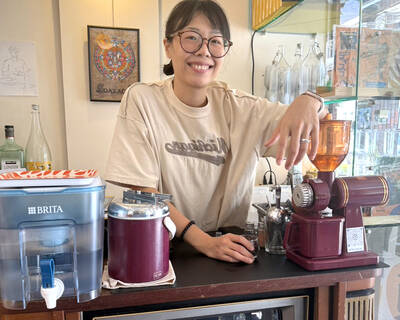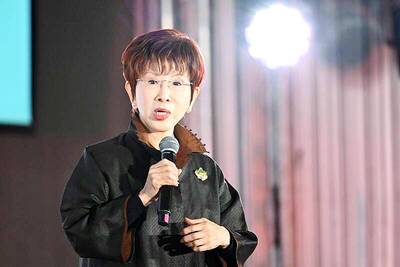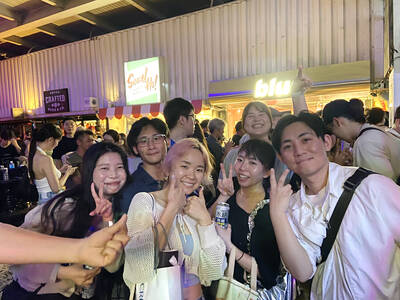Many Taiwanese have a favorable opinion of Japan, in part because Taiwan’s former colonial master is seen as having contributed a great deal to the development of local industries, transportation networks and institutions of education.
Of course, the island’s people were never asked if they wanted to be ruled by Tokyo or participate in its modernization plans. From their arrival in 1895 until at least 1902, the Japanese faced widespread and violent antagonism. Things then calmed down, relatively speaking. Even so, between 1907 and 1916 there were eleven anti-Japanese revolts. A map in the National Museum of Taiwan History (國立臺灣歷史博物館) highlights 23 locations where armed resistance took place between 1896 and 1932.
The Japanese dismissed those who were hostile to colonial rule as “bandits” and “rioters,” and the colonial authorities didn’t shy away from using brute force to suppress opposition. In Kaohsiung, where Japanese anti-insurgency sweeps in late 1898 resulted in hundreds of civilian deaths, two memorials just 6km apart honor some of those who perished.

Photo: Steven Crook
THE FIRST MASSACRE
These days, Gunshuei (滾水) is a nondescript semi-rural community in Yanchao District (燕巢) located between Freeway 1 and the high-speed railway. It has a few factories and a sizable hall of worship. Being just 10 minutes by car or motorcycle from Taiwan Railway Corp and Kaohsiung Metro stations, it’s hardly surprising that several new apartment buildings are under construction close to Gunshuei Guanshuei Temple (滾水觀水宮).
The Gunshuei Qingzhuang Incident (滾水清庄事件) occurred on Christmas Day 1898, the 13th day of the 11th month on the traditional lunisolar calendar. Japanese soldiers arrived at the village and announced they would check household registration documents. Once the entire population had assembled in front of Gunshuei Guanshuei Temple, interrogations accompanied by torture began.

Photo: Steven Crook
Later, having failed to single out “anti-Japanese elements,” the Japanese commander ordered the killing of all males aged 16 or above. The bodies of the 128 victims were then burned. Unable to identify their loved ones, surviving villagers buried the deceased in a common grave. Because so many of its supporters were dead or later fled, the temple was abandoned and not reestablished until 1960. Its principal deity nowadays is Marshal Hsieh (謝府元帥).
Surprisingly, given their hostility to Japan and their eagerness to depict the 1895-1945 colonial period as a dark age, the postwar Chinese Nationalist (KMT) regime didn’t publicize this event. Can this be attributed to their lack of interest in local traditions and history? For whatever reason, nothing marked the site of the massacre until 1999, when Yenchao Humanist Society (援剿人文協會) worked with local residents to set aside a tennis court-sized plot of land and raise the necessary funds.
The Gunshuei Mourning Monument (殤滾水紀念碑), located less than 100m north of the temple, consists of a simple square column surrounded by trees. The site is obviously well cared for; a sign reminds visitors that “Good neighbors watch out for each other… Environmental hygiene is everyone’s responsibility.”

Photo: Steven Crook
DIRECTIONS
You’ll need to take a taxi if you don’t have your own vehicle; the distance from Gangshan’s Kaohsiung Metro/Taiwan Railway Corp. (TRC) station is just under 5 km. The nearest exit on Freeway 1 is Gangshan (岡山).
SANDE’S 11.14 MEMORIAL PARK
Another atrocity occurred the following day. Accusing local civilians of collaborating with bandits — while at the same time saying they were trying to protect rural residents from brigandage — Japanese military police ordered a local leader surnamed Liou (劉) to hand over criminals. After he failed to do so, they returned in force to what’s now Sande Borough (三德里) in Ciaotou District (橋頭) on the 14th day of the 11th lunar month.
Every man aged 15 or older was detained. Of the 100 subsequently massacred, 99 were locals. A cattle dealer from another village happened to be at the wrong place at the wrong time. It’s said that no one dared to claim the dead, so the Japanese buried them on the spot.
The behavior of the colonial forces didn’t go uncriticized at the time. Their brutality prompted Western missionaries active in the area to submit a joint letter of protest to a Hong Kong newspaper.
An article published in The Monthly Messenger and Gospel in China in March 1899 acknowledged that banditry was a real problem, but placed much of the blame on Tokyo’s tactics, noting that, “in the early days of the occupation… [Taiwanese] people were kicked out of their homes, or had their property confiscated by some stupid and cruel lower-level officials, and were forced to flee into the mountains… looting and bloodshed occur everywhere; the bandits are becoming more and more brazen, even attacking Japanese posts, killing soldiers, expropriating food from good people, intimidating and extorting… and setting fire to houses. It is no longer possible for teachers to go to the countryside to inspect churches.”
According to an official account published by the colonial authorities four decades later, criminality in the southwest was especially serious in 1897 and 1898. During that period, 926 bandits were killed, as were 2,053 civilians.
Those fighting the colonizers were typically equipped with homemade firearms, machetes, and spears. It’s not clear if the Japanese forces were already trained to prevent modern weaponry from falling into enemy hands; by the time of the Tapani Incident (西來庵事件 or ?吧哖事件) in 1915, it’d been impressed upon colonial soldiers and police that, when defeat seemed inevitable, it was their duty to destroy anything that could be used by rebels, even if it left them defenseless.
In early 2012, hundreds of human bones, along with some pieces of clothing, were excavated from a field near Sande Sanshan Temple (三德三山宮). After ritual washing they were reinterred beneath 11.14 Memorial Park (11.14紀念公園, also known as Liubanzhang Memorial Park, 六班長紀念公園).
People don’t avoid this pleasantly shaded spot as they might a conventional cemetery. On the contrary, it’s popular with retirees who like to play cards or sing. There are three karaoke machines in close proximity, but nobody seems bothered by the auditory overlap — or by the violent deaths that occurred here more than a century ago.
DIRECTIONS
Walking southwest from Ciaotou Station (part of both the TRC network and the Kaohsiung Metro) takes about half an hour. The closest bus stop is a few hundred meters to the north and served by fairly frequent buses from Kaohsiung Medical University Gangshan Hospital Metro Station. The area is flat and thus ideal for cycling. According to signs opposite Sande Sanshan Temple, it’s just 2.4km to Ciaotou’s sugar refinery and 5.7km to Kezailiao (see “The charm of old Kezailiao” in the March 8, 2019 issue of this newspaper).

Cheng Ching-hsiang (鄭青祥) turned a small triangle of concrete jammed between two old shops into a cool little bar called 9dimension. In front of the shop, a steampunk-like structure was welded by himself to serve as a booth where he prepares cocktails. “Yancheng used to be just old people,” he says, “but now young people are coming and creating the New Yancheng.” Around the corner, Yu Hsiu-jao (饒毓琇), opened Tiny Cafe. True to its name, it is the size of a cupboard and serves cold-brewed coffee. “Small shops are so special and have personality,” she says, “people come to Yancheng to find such treasures.” She

In July of 1995, a group of local DJs began posting an event flyer around Taipei. It was cheaply photocopied and nearly all in English, with a hand-drawn map on the back and, on the front, a big red hand print alongside one prominent line of text, “Finally… THE PARTY.” The map led to a remote floodplain in Taipei County (now New Taipei City) just across the Tamsui River from Taipei. The organizers got permission from no one. They just drove up in a blue Taiwanese pickup truck, set up a generator, two speakers, two turntables and a mixer. They

Former Chinese Nationalist Party (KMT) chairwoman Hung Hsiu-chu’s (洪秀柱) attendance at the Chinese Communist Party’s (CPP) “Chinese People’s War of Resistance Against Japanese Aggression and the World Anti-Fascist War” parade in Beijing is infuriating, embarrassing and insulting to nearly everyone in Taiwan, and Taiwan’s friends and allies. She is also ripping off bandages and pouring salt into old wounds. In the process she managed to tie both the KMT and the Democratic Progressive Party (DPP) into uncomfortable knots. The KMT continues to honor their heroic fighters, who defended China against the invading Japanese Empire, which inflicted unimaginable horrors on the

Hannah Liao (廖宸萱) recalls the harassment she experienced on dating apps, an experience that left her frightened and disgusted. “I’ve tried some voice-based dating apps,” the 30-year-old says. “Right away, some guys would say things like, ‘Wanna talk dirty?’ or ‘Wanna suck my d**k?’” she says. Liao’s story is not unique. Ministry of Health and Welfare statistics show a more than 50 percent rise in sexual assault cases related to online encounters over the past five years. In 2023 alone, women comprised 7,698 of the 9,413 reported victims. Faced with a dating landscape that can feel more predatory than promising, many in